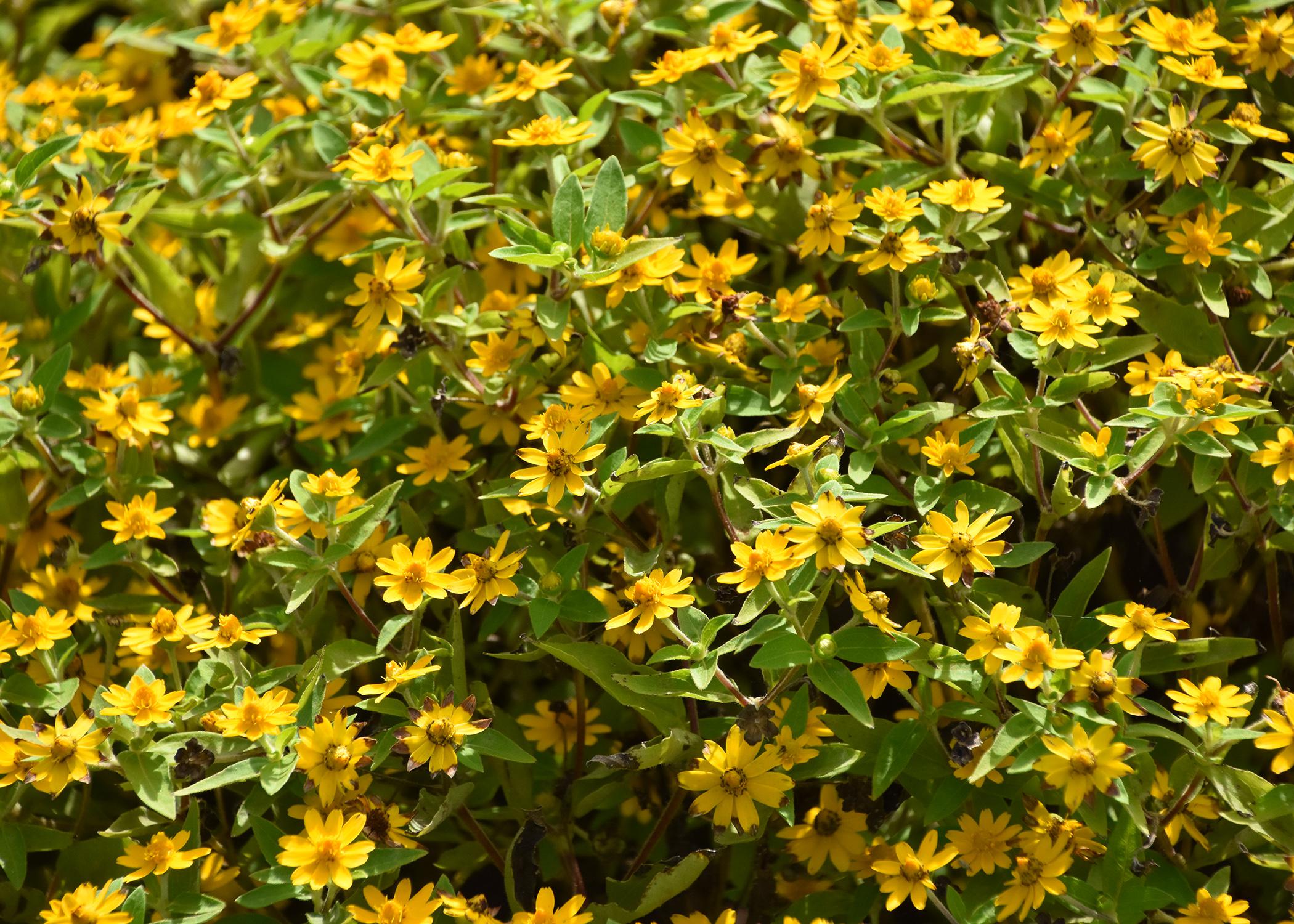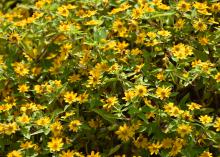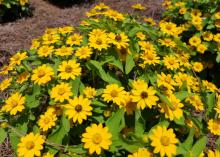Information Possibly Outdated
The information presented on this page was originally released on April 20, 2020. It may not be outdated, but please search our site for more current information. If you plan to quote or reference this information in a publication, please check with the Extension specialist or author before proceeding.
Melampodium is a garden must-have
There are a few must-have plants for my summer Mississippi garden and landscape. You can count on me having Vista Bubblegum supertunia, marigolds and all kinds of zinnias to provide color for my yard. But another great plant that doesn’t get a whole lot of attention is melampodium.
I hope my talking about it will make melampodium become the latest item to fly off the shelves during the current COVID-19 situation.
Let’s face it: Melampodium is one tough plant when it comes to flowering and just plain looking good in the heat and humidity of the Mississippi summer.
Melampodium was selected as a Mississippi Medallion winner way back in 1997. And no wonder, because melampodium is a nonstop bloomer from summer until frost. It literally bursts forth with yellow to golden daisy- or star-like flowers.
It requires no staking. Because melampodium is self-cleaning, that means you don’t have to deadhead the flowers, either, which really is a plus when the temperatures start to soar in the summer.
Melampodium prefers full sun and looks great no matter how hot and dry it is. But it is important to maintain a consistent root zone moisture.
There are several standard melampodium varieties available, with more being introduced. Sizes vary from 10 to 24 inches tall. Selections to look for include Derby, Medallion, Million Gold and Jackpot Gold.
Plant in the landscape at the same depth as they grew in the container. Space them on 8-inch centers to allow the plants to grow together and form a brilliant mass. A happy surprise you’ll get next spring is that melampodium reseeds. The new plants can be thinned if needed.
I always allow reseeded seedlings to grow because it seems to me that is where Mother Nature thought the plant should be growing.
Melampodium likes dry conditions and makes a great container plant. Transplant into a light, well-drained soil. It is easy to grow and has few demands.
Melampodium really likes to have consistent fertilization. Use a controlled-release fertilizer at transplanting and then once a month through the summer. I like to use water-soluble fertilizer since I’m going to have to water anyway.
In my experience, snails and slugs are the only pests that bother melampodium. Use snail baits or sprinkle diatomaceous earth -- the fossil remains of prehistoric algae -- to control these pests.
The flowering display of Melampodium is strong enough to stand on its own, but try pairing it with other yellows, reds, and oranges to create a warm color scheme that will be hot this summer. This is where combination planting with my zinnias is always a hit.
The only problem with Melampodium is that it only comes in one color, but that’s not enough of a problem to stop you from enjoying it in your garden this year.




